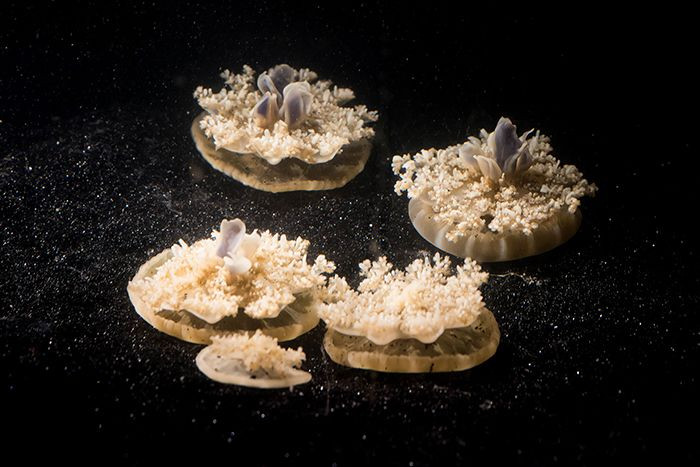Mysterious Fossils Are The Embryos Of Jellyfish Ancestors, Paleontologists Say

Scientists say mysterious microscopic fossils discovered decades ago are the ancestors of jellyfish, opening a window into that evolutionary line.
The researchers used X-ray equipment to study the Pseudooides fossils, each of them embryos smaller than a grain of sand, to identify features of the creatures that escaped experts when they were first found embedded in rock years ago. Those paleontologists now say the tiny animals were part of a group that eventually evolved into jellyfish.
That’s news to scientists who had been betting the Pseudooides embryos belonged to a segmented animal like an insect, based on its own segmented middle section.
“It seems that, in trying to classify these fossils, we’ve previously been barking up the wrong branch of the animals family tree,” researcher Kelly Vargas said in a statement from the University of Bristol.
The university referred to the apparent segmented part of Pseudooides as “the folded edge of an opening, which developed into the rim of the cone-shaped skeleton that once housed the anemone-like stage in the life cycle of the ancient jellyfish.”

According to the researchers’ study in the journal Proceedings of the Royal Society B, the spherical fossils date back to the early Cambrian period, which makes them about 500 million years old.
The study says the prehistoric creatures had “a life history that is quite distinct from their living relatives,” today’s jellyfish.
Learning more about jellyfish evolution could help scientists in their quest to better understand humans and other creatures. For example, although jellyfish do not have brains or central nervous systems, scientists have recently observed them sleeping for the first time — which calls into question what we think we know about why people sleep.

According to researcher Luis Porras, in addition to offering clues about how complex animals evolved, the embryo fossils also “provide insights into the how embryology of animals itself has evolved.”
© Copyright IBTimes 2025. All rights reserved.





















